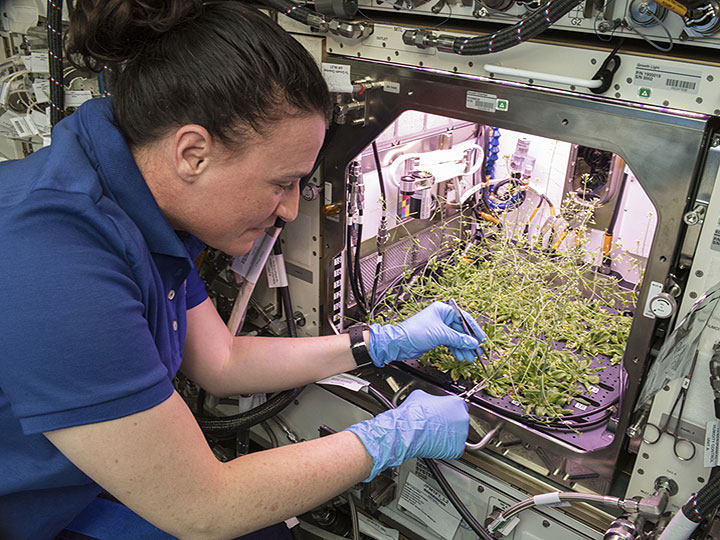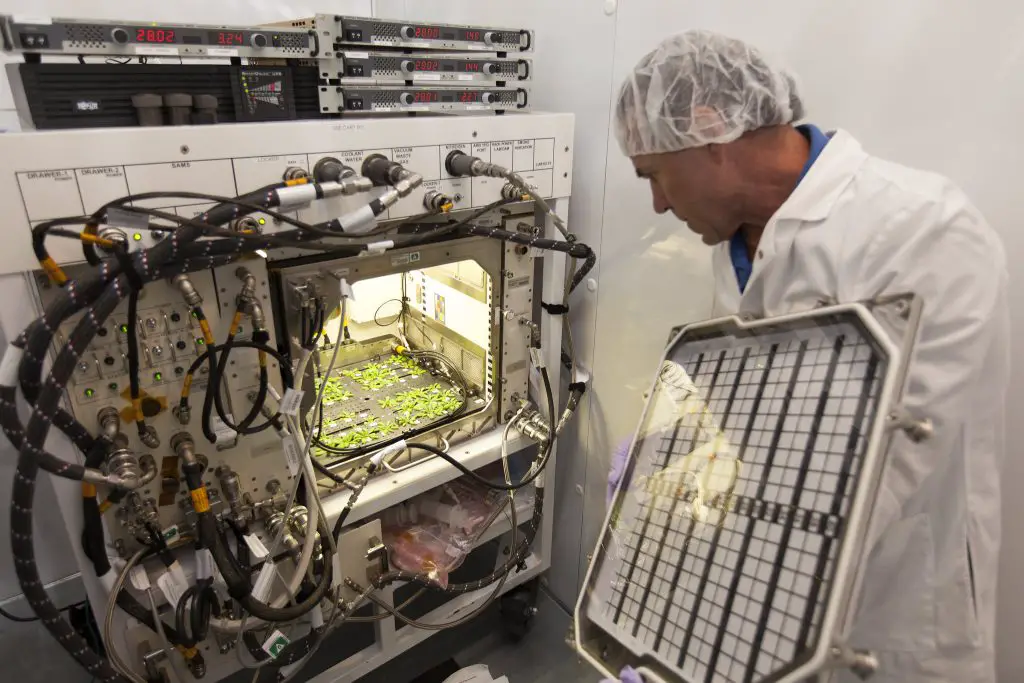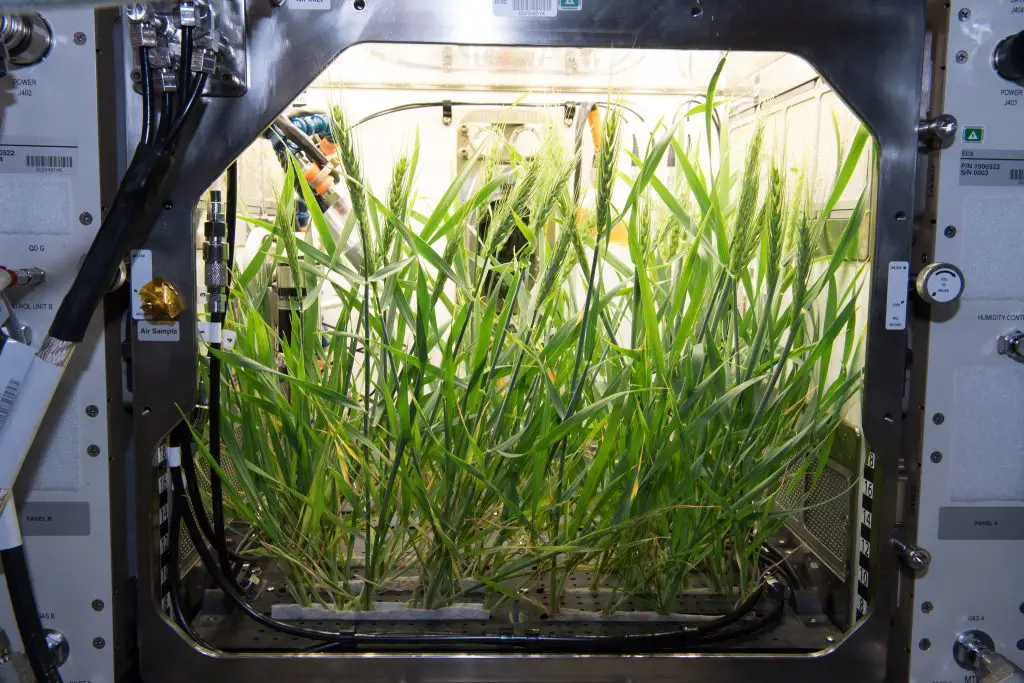Microgravity affects plant growth by altering their orientation and growth patterns due to a lack of gravitational cues. In microgravity, plants display reduced root formation and increased shoot elongation, leading to weaker and less sturdy plants.
Microgravity, the condition experienced by objects in space where the force of gravity is significantly reduced, has long fascinated scientists and researchers alike. One area of particular interest is how this unique environment affects the growth and development of plants.
The effects of microgravity on plant growth have been extensively studied, revealing intriguing insights into the adaptations and responses exhibited by plants in the absence of gravitational cues. Understanding these effects not only sheds light on the fundamental principles of plant biology, but also has practical implications for future space exploration and the cultivation of plants in extraterrestrial environments. This article explores the ways in which microgravity influences plant growth and the implications it may have for our future in space exploration and colonization.

Credit: www.issnationallab.org
Understanding Microgravity
Microgravity, also known as zero gravity or weightlessness, is a fascinating phenomenon that greatly impacts plant growth. Understanding how plants adapt and flourish in these conditions is crucial for future space exploration and extraterrestrial agriculture. In this section, we will delve into the concept of microgravity, explore its differences from normal gravity, and highlight the challenges faced by plants in these unique environments.
Explanation Of Microgravity And How It Relates To Plant Growth:
- Microgravity refers to the condition in which gravity is significantly reduced or eliminated, resulting in a state of weightlessness. This occurs in space, where the absence of a significant gravitational force allows objects to float freely.
- The absence of gravity has a profound impact on various biological processes, including plant growth. Plants rely on gravity to orient their growth and develop functional root systems that anchor them in the soil.
- In microgravity, plants exhibit altered growth patterns and struggle to establish proper root systems. This can lead to stunted growth, reduced nutrient uptake, and impaired development.
Discuss The Difference Between Microgravity And Normal Gravity:
- In normal gravity, plants grow towards the source of gravity, which helps guide their root growth downward and their shoots upward. This allows for efficient nutrient uptake and structural support.
- In microgravity, the absence of a consistent gravitational pull causes plants to grow in random directions, leading to distorted growth patterns and an inability to discern up from down.
- Normal gravity allows for efficient transportation of water and nutrients throughout the plant, while microgravity hinders these processes, leading to reduced nutrient availability for plant growth.
Highlight The Challenges Faced By Plants In Microgravity Environments:
- Without the guidance of gravity, plants in microgravity struggle to establish a strong root system. This compromises their ability to extract water and nutrients from the surrounding environment.
- The lack of a consistent gravitational pull also affects the transportation of fluids within the plant, disrupting the circulation of water, hormones, and other essential compounds necessary for growth.
- The absence of gravity also impacts plant signaling mechanisms, which rely on gravity cues for proper development and response. This disrupts the coordination of processes such as cell division, differentiation, and reproduction.
Microgravity presents a unique set of challenges for plant growth. Understanding these challenges is crucial for developing strategies to overcome the limitations of microgravity and pave the way for successful plant cultivation in space missions and future extraterrestrial habitats.
The Influence Of Microgravity On Plant Physiology
How Does Microgravity Affect Plant Growth And Development?
Microgravity, or the condition of very weak gravity, can have a significant impact on various aspects of plant growth and development. Let’s discuss some key points related to the influence of microgravity on plant physiology:
The Influence Of Microgravity On Plant Physiology:
- Germination process:
- In microgravity, the process of germination may be delayed or disrupted.
- Seeds may experience difficulty in sensing the direction of gravity, affecting their ability to break out of their protective seed coat and initiate growth.
- Root development and nutrient absorption:
- Microgravity can impede root growth and development.
- Roots tend to grow in irregular, often entangled patterns, which can hinder their ability to anchor the plant and absorb nutrients properly.
- The absence of gravitational forces also affects the flow of water and nutrients within the plants, further impairing their growth.
- Plant hormone production and regulation:
- Microgravity alters the production and distribution of plant hormones.
- The balance between auxins, gibberellins, and cytokinins may be disrupted, affecting key physiological processes such as cell elongation, organ development, and flowering.
- Additionally, the levels of abscisic acid, a hormone involved in stress response and senescence, may be altered in microgravity conditions.
Understanding the impact of microgravity on plant growth and development is crucial for future space missions and extraterrestrial farming endeavors. Further research is needed to fully comprehend and optimize plant responses to microgravity, paving the way for sustainable food production in space.
Adaptation Mechanisms Of Plants In Microgravity
Microgravity, the condition in which objects appear weightless, has long intrigued scientists and engineers as they explore the effects it has on various phenomena, including plant growth. How do plants adapt to survive and thrive in microgravity? Let’s explore the adaptation mechanisms of plants in such an environment.
Genetic And Epigenetic Changes In Plant Adaptation:
- Genetic changes: Plants, when exposed to microgravity, may undergo genetic modifications that enable them to better cope with the altered conditions. These changes can involve alterations in gene expression, dna repair mechanisms, and the activation of specific stress-related genes.
- Epigenetic changes: In addition to genetic modifications, plants may also experience epigenetic changes in microgravity. These changes involve modifications to the structure and accessibility of dna without altering the underlying genetic code. Epigenetic changes can influence gene expression patterns and play a significant role in plant adaptation.
Modification Of Growth Patterns And Structures:
- Growth pattern modification: In microgravity, plants often exhibit modified growth patterns, such as increased elongation of stems and roots. This elongation allows them to explore their immediate surroundings more effectively and seek out essential resources like water and nutrients. Additionally, plants may exhibit altered patterns of leaf growth, resulting in a more efficient exposure to light.
- Structural modifications: One key adaptation that plants undergo in microgravity is the modification of their structural features. For instance, root hairs, which are responsible for nutrient absorption, may become shorter and more numerous to compensate for reduced gravity-driven nutrient uptake. Similarly, the alignment of cellulose fibers in plant cell walls may change, altering the overall rigidity and strength of the plant’s structure.
By understanding these adaptation mechanisms, scientists hope to gain insights into how plants can be grown and utilized in space exploration missions. As we delve deeper into the fascinating world of microgravity plant growth, we uncover more secrets of nature’s resilience and adaptability.
The Impact Of Microgravity On Plant-Microbe Interactions
Microgravity, the condition of weightlessness experienced in space, has a profound effect on various biological processes. One area of interest is the impact of microgravity on plant-microbe interactions, specifically on the development of beneficial relationships and the plant’s immune response to harmful microbes.
How Does Microgravity Affect Plant-Microbe Symbiosis?
In the absence of gravity, plants and microbes face unique challenges in establishing symbiotic relationships. Here are the key points to understand:
- Microgravity disrupts the formation of beneficial relationships between plants and microbes. Without gravity, the cues necessary for plants to recognize and interact with beneficial microbes are altered, leading to difficulties in establishing symbiosis.
- Root colonization by beneficial microbes is compromised in microgravity. The lack of gravity inhibits the proper attachment and anchoring of microbes to the plant’s root system, hindering the establishment of a mutualistic relationship.
- The altered microgravity environment affects the exchange of nutrients between plants and microbes. Nutrient uptake and transfer mechanisms are disrupted, impacting the ability of plants and microbes to benefit from this mutualistic relationship.
Explain The Effects Of Microgravity On The Plant’S Immune Response To Harmful Microbes.
While microgravity poses challenges to beneficial plant-microbe relationships, it also impacts the plant’s ability to defend against harmful microbes. Consider the following points:
- Microgravity weakens the plant’s immune response to harmful microbes. Without gravity, plants exhibit reduced production of defense-related compounds, making them more susceptible to pathogen infections.
- Altered stress response in microgravity affects the plant’s ability to combat harmful microbes. Under normal gravity conditions, plants activate stress response pathways to fend off pathogens. However, the absence of gravity disrupts the functioning of these pathways, compromising the plant’s ability to mount an effective defense.
- The expression of plant defense genes is altered in microgravity. The regulatory mechanisms that control the activation of genes involved in defense responses are disrupted, leading to the dysregulation of immune-related processes.
Understanding the impact of microgravity on plant-microbe interactions provides valuable insights for future space exploration and agriculture applications. By elucidating the underlying mechanisms, scientists can develop strategies to enhance plant growth and protect against pathogens in microgravity environments. The exploration of these interactions not only advances our knowledge of space biology but also has practical applications for sustainable agriculture on earth.
Implications For Space Exploration And Agriculture
Microgravity, the condition of apparent weightlessness experienced by objects in orbit, has profound effects on plant growth. Understanding how plants respond to this unique environment has significant implications for both space exploration and agriculture here on earth. Through microgravity research, scientists are uncovering exciting potential applications in space farming and long-duration space missions.
By studying plant responses to microgravity, we can gain valuable insights that can improve agricultural practices on our planet. In this section, we’ll delve into the exciting possibilities offered by microgravity research and explore how it can shape the future of space colonization and farming.
Let’s dive in and discover the potential applications of microgravity research in these fascinating fields.
Discuss The Potential Applications Of Microgravity Research In Space Farming And Long-Duration Space Missions.
- Conducting microgravity experiments with plants allows us to develop sustainable food production systems for future space missions, ensuring astronauts have access to fresh and nutritious food throughout their journeys.
- By studying how plants grow and develop in space, we can find ways to optimize their growth and increase crop yields, providing a steady supply of food in resource-limited environments.
- Microgravity research offers insights into the effects of altered gravity on plant biology. Understanding these effects can help us develop strategies to mitigate the negative impacts of microgravity on plants, ensuring their successful growth and survival in space.
- By exploring how plants adapt to microgravity conditions, we can potentially develop new varieties or genetic modifications that enhance their resilience and productivity in space environments.
Highlight The Importance Of Understanding Plant Growth In Microgravity For Future Colonization Efforts.
- Plant growth in microgravity is a crucial aspect of future colonization efforts, as it allows for sustainable food production in extraterrestrial habitats. Understanding how plants adapt to microgravity conditions helps us design effective strategies to support human life during long-duration space missions and potential colonization of other celestial bodies.
- By studying plant growth in microgravity, we can establish closed-loop life support systems that recycle waste and provide oxygen, reducing the need for constant resupply from earth.
- The knowledge gained from microgravity research can guide the development of plant cultivation systems suitable for space habitats, ensuring the success of future colonization endeavors.
Mention How Studying Plant Responses To Microgravity Can Improve Agricultural Practices On Earth.
- Microgravity research not only has implications for space exploration but also holds the potential to revolutionize agriculture on earth.
- Studying how plants respond to microgravity allows us to gain insights into fundamental biological processes, shedding light on plant development, stress response mechanisms, and nutrient uptake.
- This knowledge can be leveraged to enhance agricultural practices, optimizing crop growth, and increasing yields in terrestrial environments.
- Understanding plant responses to altered gravity conditions can help address challenges such as drought, nutrient deficiencies, and other environmental stresses faced by crops, leading to more sustainable and resilient agricultural systems.
Through microgravity research, the possibilities are endless. By unraveling and harnessing the potential of plant growth in this unique environment, we can pave the way for the future of space exploration and agriculture, both in the depths of space and here on our home planet.
Frequently Asked Questions For How Does Microgravity Affect Plant Growth
How Does Microgravity Affect Plant Growth?
Microgravity affects plant growth by altering the distribution of nutrients and hormones, leading to changes in cell division, elongation, and differentiation. Without the pull of gravity, plants may struggle to orient themselves and develop weaker cell walls. This can result in stunted growth and reduced overall plant health.
Can Plants Grow In Microgravity?
Yes, plants can grow in microgravity. Nasa has conducted numerous experiments aboard the international space station to study plant growth in space. With the help of advanced technology and controlled environments, astronauts have successfully cultivated plants like lettuce and zinnias, paving the way for future space farming.
How Do Plants Adapt To Microgravity?
Plants adapt to microgravity by responding to changes in their environment. In space, plants develop shorter and more compact stems due to the lack of gravity pulling them upward. They rely on other cues, such as light and touch, to determine their orientation and growth patterns.
These adaptations ensure survival and reproduction in space conditions.
Conclusion
It’s clear that microgravity has a profound impact on plant growth, offering both challenges and opportunities for scientific exploration. In this blog post, we’ve explored the effects of microgravity on various aspects of plant development, from germination to flowering and fruiting.
Through extensive research and experiments conducted on the international space station, scientists have gained valuable insights into the cellular and molecular mechanisms underlying these changes. Understanding how plants adapt to microgravity could have significant implications for agriculture and space exploration, as we strive to find ways to sustain human life in other environments.
By studying the effects of microgravity on plant growth, we are not only expanding our knowledge of fundamental biology but also paving the way for future advancements in sustainable food production and improving the living conditions of astronauts on long-duration space missions.
As technology advances, this field of research will continue to evolve, bringing us closer to unlocking the mysteries of how microgravity affects plant life.




